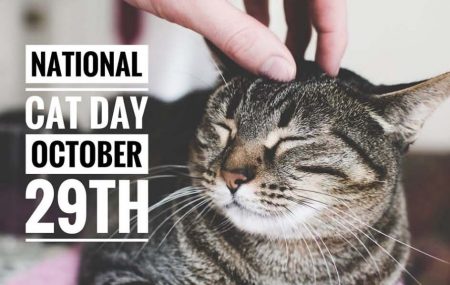National Cat Day is observed each year on October 29th and it was founded to help the public recognize the number of cats that need to be rescued. The day also encourages cat lovers to celebrate the cats in their lives for the unconditional love and companionship that they bestow upon them.
National Cat Day Activities
Adopt a Cat
National Cat Day is all about raising awareness of shelter cats and reducing the number of unwanted cats that flood shelters every day (although the question is, how could a cat possibly be unwanted?!). What better way to celebrate National Cat Day than by adopting a cat from your local shelter?
Donate to Your Local Shelter
Can’t adopt a cat? You can still improve the lives of your local shelter cats. Consider donating food, blankets, or toys to your local shelter or other animal welfare organization. Those kitties living in shelters will feel a bit more comfortable while they’re waiting for their forever home.
Volunteer at Your Local Shelter
Shelter cats need love too. Stop by your local shelter and volunteer to play with the kitties, clean their cages, scoop their litter boxes, and help with any other chores. Your visit is sure to be a bright spot in any shelter cat’s day.
Why We Love National Cat Day
Cats Are Adaptable and Easy to Maintain
Cats are super easy to maintain—they can clean themselves, use the bathroom without any help, don’t need much exercise, don’t necessarily have to go outside, and are quiet (well, most of the time). Cats can adapt seamlessly to any home environment, from a small one-bedroom apartment in the city to a spacious cottage in the country.
Cats Can Have Conversations with Us
Although cats are primarily non-verbal communicators, they will talk to you—if you talk to them. The more you talk to your cat, the more she will respond back to you. You may both be talking about totally different things, but there’s definitely a conversation going on there.
A Cat’s Nose Print Is as Unique as a Human Fingerprint
Have you ever closely examined a cat’s nose? Those bumps and ridges are exclusive to each individual cat and can be used as an identifier—just like a fingerprint can be used to identify a human.




